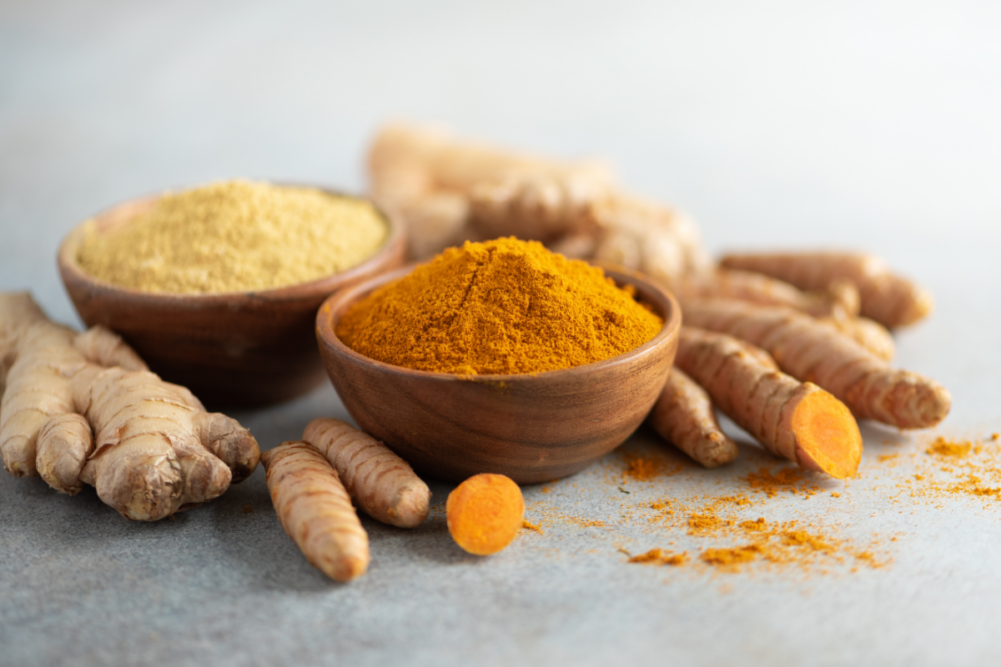KANSAS CITY — Two trends related to COVID-19 may present opportunities for herbs and spices. Consumers seeking immunity benefits might be interested in products seasoned with garlic, ginger or turmeric. Frozen food sales are up as well, meaning formulators should know how to keep flavor from fading in those applications.
A survey conducted by The Hartman Group, Bellevue, Wash., in April found 19% of respondents already were using functional foods for immunity reasons while another 48% were interested. The percentages were 13% and 46%, respectively, for functional beverages.
“In the current climate, consumers are looking to their diet for simple ways to support their immune health,” said Jill Houk, corporate research and development chef at Olam Spices, which is part of Olam Food Ingredients, a division of Olam International, Inc., Singapore. “For this reason, herbs and spices with associated health benefits are in higher demand as they can be added to a multitude of food to introduce depth of flavor whilst providing an additional health halo.
“Garlic, in particular, is well-known for its links to immunity, so it is no surprise that garlic products are on-trend at the moment. Spices such as turmeric, black pepper and ginger have been shown to play a role in healthy digestion and in helping to reduce inflammation.”
Peggy Castaldi, director of marketing for SupHerb Farms, Turlock, Calif., cited turmeric sales having a one-year growth rate of 18% and a four-year growth rate of almost 200%, according to a Technomic survey of 1,000 consumers.
“Sixty-one percent of consumers are willing to try new herbs and spices that they are unfamiliar with if they have functional health benefits, and 59% enjoy herbs and spices because of the functional health benefits they provide,” she said.
Garlic and ginger are on-trend, said Gary Augustine, director of marketing for Van Drunen Farms, Momence, Ill.
“They both offer well-known associations with health benefits, and their versatility and distinct flavor profiles add premiumization to food and beverages,” he said. “Fire-roasted garlic is making its mark in dips, sauces and prepared meals — even combined with chocolate — while ginger continues to see its strongest growth in beverages such as teas, beers and ciders.”
“Garlic... is well-known for its links to immunity, so it is no surprise that garlic products are on-trend at the moment.” — Jill Houk, Olam Spices
Not freezing out taste
US retail sales of frozen dinners/entrees jumped nearly 7% to $9.74 billion in the 52-week period ended July 12, according to Information Resources, Inc., a Chicago-based market research firm.
“One of the most common issues with frozen food is the freeze-thaw cycle, which occurs when a product is outside of a freezer for too long during transportation or stocking,” Ms. Houk said. “If this takes place, it can diminish the intensity of spices, meaning that the product would need a greater inclusion rate than its refrigerated or shelf-stable counterparts to have the same flavor impact.”
Freezing improves color retention in spices such as paprika and turmeric, meaning formulators may keep the inclusion rate the same as when formulating for non-frozen applications, she added.
Individually quick-frozen herbs, are best utilized in frozen form, said Anna Lewis, director of R&D for SupHerb Farms. They can be incorporated directly into applications like sauces, marinades and dough formulations,
she added.
SaltWorks, Inc., Woodinville, Wash., has worked with food manufacturers and studied how salt may be applied to enhance the sensory experience and flavors of the frozen foods, even when they are thawed or heated, said Mark Zoske, chief executive officer and founder. The company also offers a custom encapsulation option for topical frozen applications, such as for freeze-to-thaw brownies or french fries, he said.





